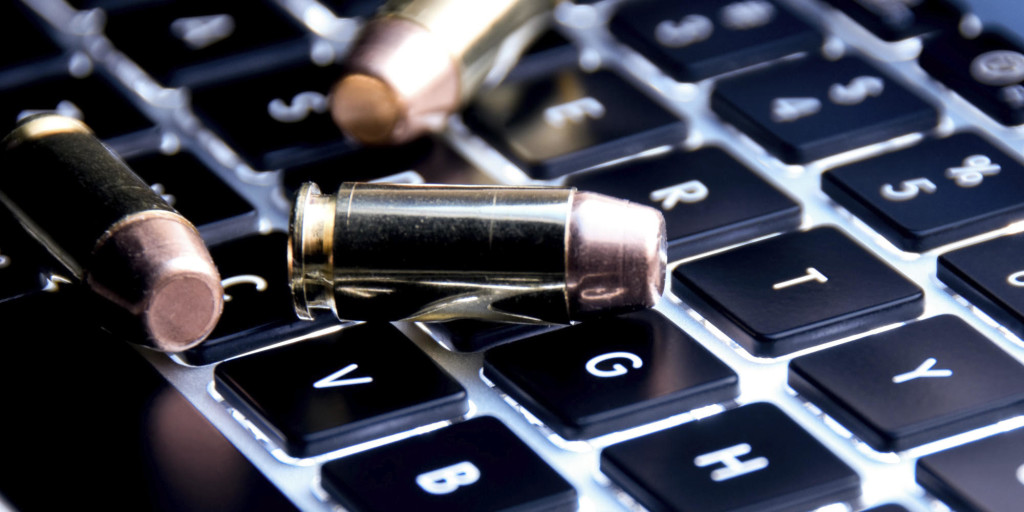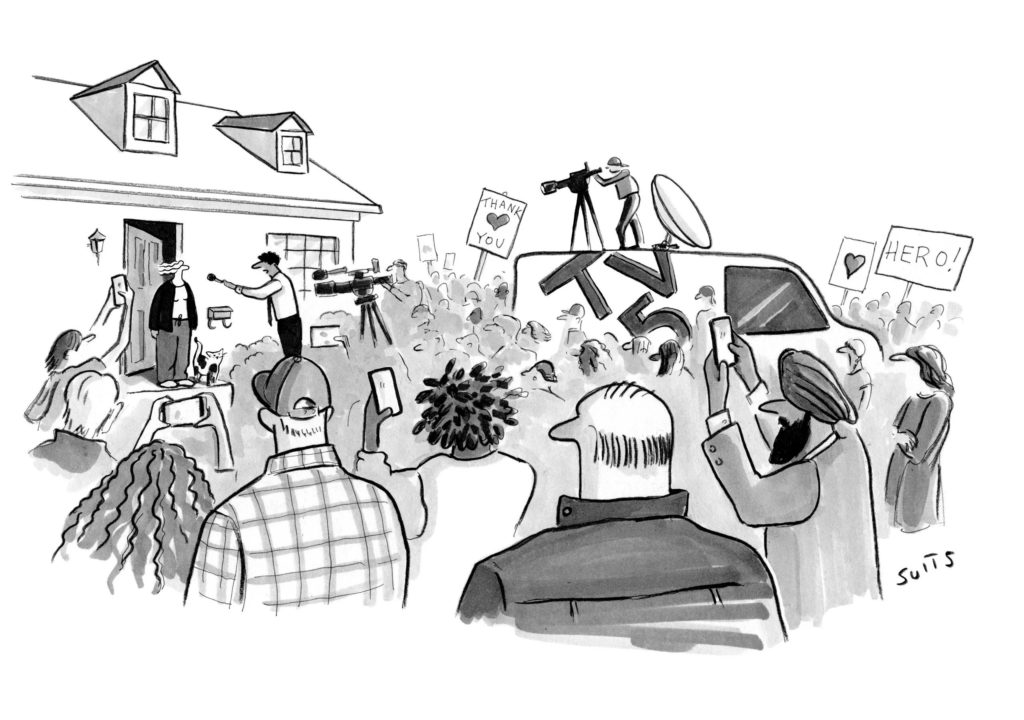Google, Facebook, Telegram, Meta, Twitter and others are levers in the current conflict, caught between demands from Ukraine, Russia, the European Union and the U.S. These companies want all the benefits of monopolizing the world’s communications with none of the responsibility of getting swept up in geopolitics and having to choose sides. Tech companies are in a no-win situation in the midst of an international crisis.
But the timeline has become our primary auditorium for observing global events, and so it is now codified, in strata, under which we relate to it – and also shows the power it holds.
Herein some random thoughts, not fully formed, in search of a narrative.

1 March 2022 (Berlin, Germany) – Patricia Lockwood, who excels at voicing the experience of someone being extremely online, gave an apt and vivid metaphor for the all-too-familiar feeling that we must not take our eyes off our social media timeline. In her wonderful 2021 novel “No One Is Talking About This” the protagonist lives her life online, in what she calls “the portal.” In an interview Lockwood was asked whether Twitter specifically, through which she staked her first claims to fame as I detailed in a post a few years ago (we met at the Frankfurt Book Fair), functioned as “the portal” in her own life. In the course of her response, Lockwood referred back to her experience of the platform around 2016:
“You felt that you had to be on there every day – like, 8 a.m., at your post – otherwise, you couldn’t control what was going to happen that day. If you didn’t know about it, then it would go on without you, beyond your control. I think a lot of people, particularly in that time, felt that they were standing sentinel, which is, in many ways, a wasteful feeling”.
“Standing sentinel”. I can’t recall a more incisive formulation for the way many of us may experience being online at certain times. I especially appreciate the way Lockwood links this to some underlying, possibly inarticulate longing for control in what are, in fact, moments of extreme flux and disorder. This impulse may spring from the misguided belief that more information will automatically lead to greater clarity about what needs to be done, almost as if the accumulation of sufficient information will perforce reveal a plan of action eliminating the need for judgment. Judgment, after all, entails a measure of risk and responsibility, neither of which are especially welcome in our time.
But I grant that this misguided desire for information is not the only reason one might feel compelled to stand sentinel at our digital outposts. Since the pandemic began, it’s only become more clear how much both “professional meaning-makers” and the general population depend on the internet’s blue-bird looking glass to livestream news breaking elsewhere in the world, notably including but not limited to, over the last two years: the George Floyd protests of summer 2020, the 6th January insurrection at the U.S. Capitol, last May’s airstrikes in Gaza, the United States’ withdrawal from Afghanistan last August, various coronavirus waves, and forms of climate disasters, and just last week, Russia’s invasion into Ukraine.
It’s come to a point where witnessing these international events has codified a kind of basic etiquette amongst Twitter regulars. In the earliest or most crucial hours of “The Event”, all regular programming – from brands, outlets, influencers large and small – pauses. Professional communicators and gen pop alike flock to identify “The Experts” and amplify their findings and footage. It’s all well and good (depending on your definition of “expert”); in that brief window, I find myself thinking lofty thoughts about what a time it truly is to be alive, witnessing breaking news in real time. But what always happens next, as the shape of “The Event” crystallizes, is when it gets weird – and revealing of what a truly flattened marketplace of ideas looks like.
Hence, I call in my media team and tell them “let’s get cracking, kids, and make some sense of all this”. Granted, many of my readers do not have a 6-person media team at their disposal. As one of my readers noted a few yeas ago:
“Look, we are all pretty just commerce monkeys, commerce machines. We barely have enough time to read and write and produce for our jobs. Who the hell has time for a dive into the big thing of the day?! We’ll scan and parse social media but that’s about it.”
But it’s what we do so you don’t need to. So we parse our own experts, many (as in the current conflict) being boots-on-the-ground folks, coupled with our primary sources: the reporters, activists, world leaders professionally tasked with weighing in on “The Event”, as well as the victims and other direct stakeholders.
I would posit there is a sub-tier of “Expert-Adjacents”, which include other professional opinion-havers like politicians, academics, disinformation debunkers, and journalists coloring in the coverage a few degrees removed from the actual goings-on. In a perfect world, the platform would elevate “Expert Content” based on service and impact; in lieu of those magical metrics, we settle for a blue badge and original media – the more compelling, the better (think of CNN’s footage of Afghans clinging to the plane in Kabul).
Where the rest of us fall into the discourse (well, most of you, not us 😂🤪) is where this live news experience gets messier and more dispiriting. Let’s call this group “The Bystanders”. Confounded with the upsetting (often graphic) evidence of each respective disaster or atrocity, you have been empowered through the means of tech to now weigh in on “The Event” yourselves — or perhaps, depending on how dystopian your view is — just plain old tricked into believing you should post, too. And so Twitter atomizes into varying genres of non-informative content, to the point where you can almost pinpoint each camp. If you have access to Twitter APIs or general Twitter metrics, is it a data stream to behold: a Master Class in how social media operates, how it is structured, its demographics.
One brief example: Russian assets are being frozen across the board. And that made trolling drop dramatically on Twitter, across Facebook. After many Tweets that normally draw tweet after tweet of screaming troll outrage, there were almost none. The brutal troll stream on NPR and Politico dropped to almost nothing. Suddenly all those anti-Biden “American patriots” have disappeared. Consider what that suggests about Russian influence on social media—fueling flames, enflaming tempers, creating false howling “majorities”. The topic needs another post. No time for this one.
Oh, yeah, almost forgot. You have “The Celebs” (who probably consider themselves “Pseudo-Experts”) who at least believe the size of their followings necessitates a statement, although results are mixed: this is how you got that ludicrous “Imagine” video by “The Celebs” attempting “Wordle activism”.
Oh, and “The Pundits” which include all the armchair analysts, critics, and basic media types with no professional stake in The Event” itself, whose primary contribution to the discourse is likely a particularly snappy way with words – or, just as often, a knack for screengrabbing – used in service of producing the Tweet that best embodies the voice of the masses (i.e. by going viral). A cartoon in The New Yorker magazine captured it best:

“The tweet you posted last night struck a chord around the world, united all factions, and basically altered the course of humanity.”
And we are all battling something many have written about – the internet’s context collapse, and attention collapse. The original definition of context collapse meant when work made for one audience crosses over into another one – or, every day on Twitter. I’m sure you’ll remember this one. On February 1st, 2021, there was a coup in Myanmar. A video documenting the events went viral, showing a woman who unwittingly recorded her daily exercise routine live on Youtube for her subscribers while black cars sped down the highway behind her. We would find out later it was the EXACT start of the coup:
But that feels inadequate to describe the dynamics of digital content in juxtaposition, because so much “content” is no longer made with an audience in mind – rather, it is made in service of an abstract resource called attention. “Attention collapse” is when content meant to capture one type of attention captures another type instead.
What I am thinking about, specifically, was what happened last week when we were viewing a chicken wings commercial in quick succession to footage of air raid sirens. Complete tonal collapse. What had happened was there were air raid sirens blaring in the background of the footage from Kyiv for nine seconds during a TV special report before the camera suddenly cuts to an Applebee’s commercial because that’s how ad computer programming works. But it didn’t cut entirely – so you had “RUSSIA INVADES UKRAINE” in the upper left corner above a smaller still of Kyiv and the breaking news chyron at the bottom while the full picture was the commercial: chicken, beer, cowboy, burger, people laughing.
The footage quickly went viral. Responses were … well, what you would expect. Applebee’s apologized.
And so there we are, “standing sentinel”, gazing not at an organised sequence of events, but a wreckage hurled at our timeline by one algorithmically curated catastrophe after another – a seeming single catastrophe which keeps piling wreckage and hurls it in front of our feet. Jesus, I want it to slow down a bit, to make a whole of what has been smashed. But I cannot. The storm is blowing in and I am so caught up in the violence I struggle for a coping mechanism to deal with the anxieties, the uncertainty born out of catastrophe and helplessness.
But I have a moral duty, a duty to bear witness, to write. My framing might be off but I have the comfort of so many readers who always tell me when this is so. And I am particularly mindful of framing after a week in Auschwitz, Krakow and Berlin immersed in the suffering of others.
I write this at 6pm, from Berlin, as the continuing catastrophe unfolds in Ukraine, a catastrophe which may even bear within it the seeds of another unthinkable cataclysm – something with an ineffable shape.
But I will stand sentinel – feeling the draw of the spectacle and the urge to bear witness, knowing, to some degree, the evident limits of both, and trying to embrace my own distinction between, on the one hand, having my attention captured and, on the other, attending to the world. I need a few days off so I’ll see you on the weekend, or next week. I need to mentally cast off this sculpture in ash rambling around my brain.